A few years back two friends, George Townsend and Duncan Montgomery took a walk through Oxford to Parson’s Pleasure, a grassy stretch on the river Cherwell notorious as a spot where men used to bathe naked, closed now for some 30 years. George’s interest in the place had been sparked while still a student at St Catherine’s College, not far downstream, where he had become a regular river swimmer. He’d been told the now famous story about a group of nude sunbathing university dons who taken unawares when a boat comes into sight, simultaneously cover their privates. Apart from one who throws a towel over his head, declaring he was more likely to be known by his face than by what was down below. George soon discovered Oxford was full of similarly named ‘bathing places’ as they became known, Long Bridges, Black Jack’s Hole, Tumbling Bay, Footman’s Bath, nicknames that stuck. He was fascinated by the potential mix of social and cultural history. And thought Duncan, who had recently decided to explore his love of printmaking through wood engraving, might be inspired by man’s relationship with these open-air pools too.
He was. Five years later and the pair have collaborated on an exhibition that opens this week at The North Wall in Summertown. Duncan has produced a series of exquisite woodcuts, based on Parson’s Pleasure and Hampstead ponds in London, near where he now lives. These will hang alongside panels of text and images provided by George, now with a PhD under his belt as well as a curated exhibition at The Oxford Museum on the history of river swimming in the city. This was clearly all meant to happen.
And so it is that George has kindly agreed to take me on the same walk, to fill me in on how Parson’s Pleasure came to be, where it was situated, and what it would have looked like. I also have an ulterior motive. Growing up in Oxford, my family often visited a river bathing hole called Dame’s Delight, university-run but open to the public. I believe it was not far from Parson’s Pleasure. Created in 1934 first for women, always clothed, and later used for mixed bathing, it closed in 1970 and so we must have been some of the last of its swimmers. But since returning to live in the city, try as I might I have never been able to find its exact location. George had promised to show me the way there too.
From the city centre we take the leafy path at the end of South Parks Road, swerving the cyclists who use it as a short cut into town from Marston, through an opening between Linacre College and the south side of University Parks. Today the sky is blue and though the air a little chilly for a dip, at least it is dry, not flooded as it has been for so many weeks this winter. Which is not surprising as this area is criss-crossed with waterways, streams and tributaries. In the old days when this was open fields you’d have been ferried across the water by punt. Now there are bridges. Lots of them. Parsons Pleasure was on a bend of the river Cherwell, in between man-made streams leading to the medieval Holywell Mill and King’s Mill. The earliest records of it date back to the early 1600’s, when it was called Patten’s Pleasure. George thinks this was probably after William Patten, better known as William Waynflete, founder of Magdalen College who own much of the land around here to this day. It had other names too, Loggerhead in the 19th century for instance (another name for the Parliamentary encampments cited around here during the English civil war). But it was Parson’s Pleasure that stuck, by now frequented by University fellows who until the late 1800’s were unmarried Anglican clerics.
Today the place it once occupied is set behind railings, a pretty tree filled park beside a loop in the river, on the east side bordered by a set of rollers. Once the spot where sensitive passengers, eager to avoid the sight of bathers in the buff, were reunited with their fellow boaters having disembarked further upstream, nowadays it’s used by punts and canoes to avoid the weir on its east bank. There are signs warning you of the dangers of swimming here. A man is asleep on a bench, a couple of Canada geese his only company.
It doesn’t take much to imagine the place in its heyday, a picture George paints as we stand just above the rollers overlooking a swirling eddy known as The Devil’s Eye – twelve and a half foot deep, George and his cousin Kit have measured it – and the resting place of many a lost punting pole, as well as a bronze age sword now in The Ashmolean Museum. That it predates the invention of the swimming costume, was probably one reason it remained a place where people swam naked, explains George. But it was enclosed in the mid 1800’s when it became a means of making money for a tenant fisherman, a line of changing huts at the back shielding a large sunbathing area on the banks of the river, and ladders and diving boards giving easy access to the water. There would have been an attendant’s cottage to one side, which served as an office and parlour and where you’d pay your entry fee and to rent a towel. One attendant, Charles Cox, ran the outfit for 75 years, taught many boys to swim and even made it to the pages of Tatler, before his death at the age of 93. William Morris was a regular (there’s a Morris and Co wallpaper called, ‘The Cherwell’) as was CS Lewis who recorded in his diary after returning from the Western Front, how as time went by, wounds from the battlefield were less frequently on show.
And so it is I discover Dame’s Delight. Or rather George points it out to me. It’s straight across the water from where we are standing. There would have been a hoarding which doubled as a walkway across by the weir when I swam there, to protect us from the sights of the naked men opposite, he tells me. And I’d have accessed it over the fields, not the bridge (built in 1992) we now take. Sadly, there’s not much left to see. A rough sleeper has pitched his tent next to the concrete base of what were once our old changing cubicles, and a line of wooden staves in the water, stick up like jagged teeth, where the water was divided into shallow and deeper bathing areas. But the happy memories of all-day picnics, baggy wet swimming costumes and bathing hats with under chin straps come flooding back. I’m glad to have found it and although now carpeted with wild mint, it’s sad to see it so deserted and overgrown.
One last excursion down the path between the two waterways known locally as Mesopotamia to see where George used to swim as a student. A deer grazing in a field alongside is startled to see us. Two magpies bicker on the branches of a willow tree. Once cultivated everywhere in Oxford as a natural way of shoring up the riverbanks, you can see why, the roots stretching outwards and downwards alongside the water. People the scene with figures inspired by classical statuary, wrestling, boxing, playing football; reminders of a time when stripped of clothing people were encouraged to be less self-conscious of their bodies, and athleticism was a central part of male educational upbringing. It could almost be one of Duncan’s wood engravings.
Duncan Montgomery and George Townsend: Parson’s Pleasure and the Ponds is at The North Wall in Summertown from 8 – 25 May 2024
The exhibition opening is on Wednesday 8 May 6-8pm
Then at Highgate Gallery in London 7 – 20 June 2024.
Woodcut images ©Duncan Montgomery

Duncan Montgomery’s wood engravings are beautifully conceived portraits of open air bathing, a mix of water, structures and classical figures. Inspired while still at university by work he saw in the library printed by the British private presses, he bought 3 tools, a roller, some ink and a few blocks of box wood, as well as a book, ‘Wood Engraving – how to do it’ and taught himself at his kitchen table, which still serves as his studio.
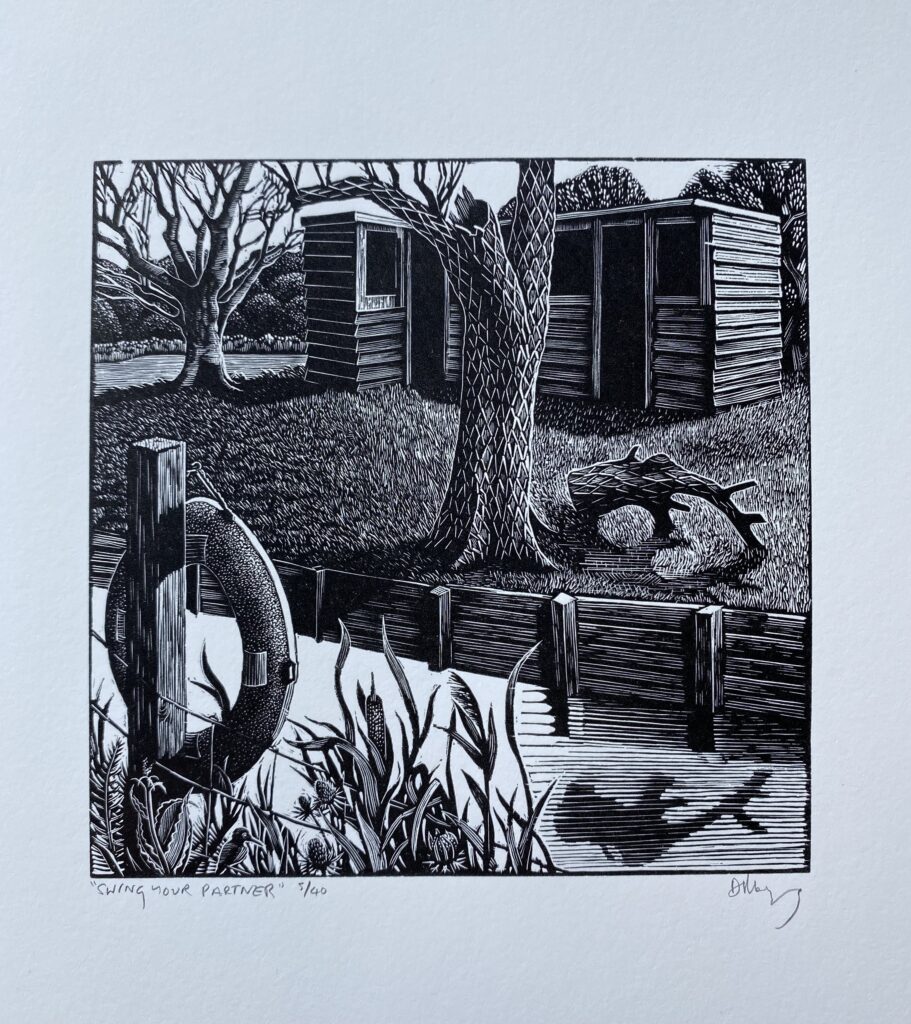
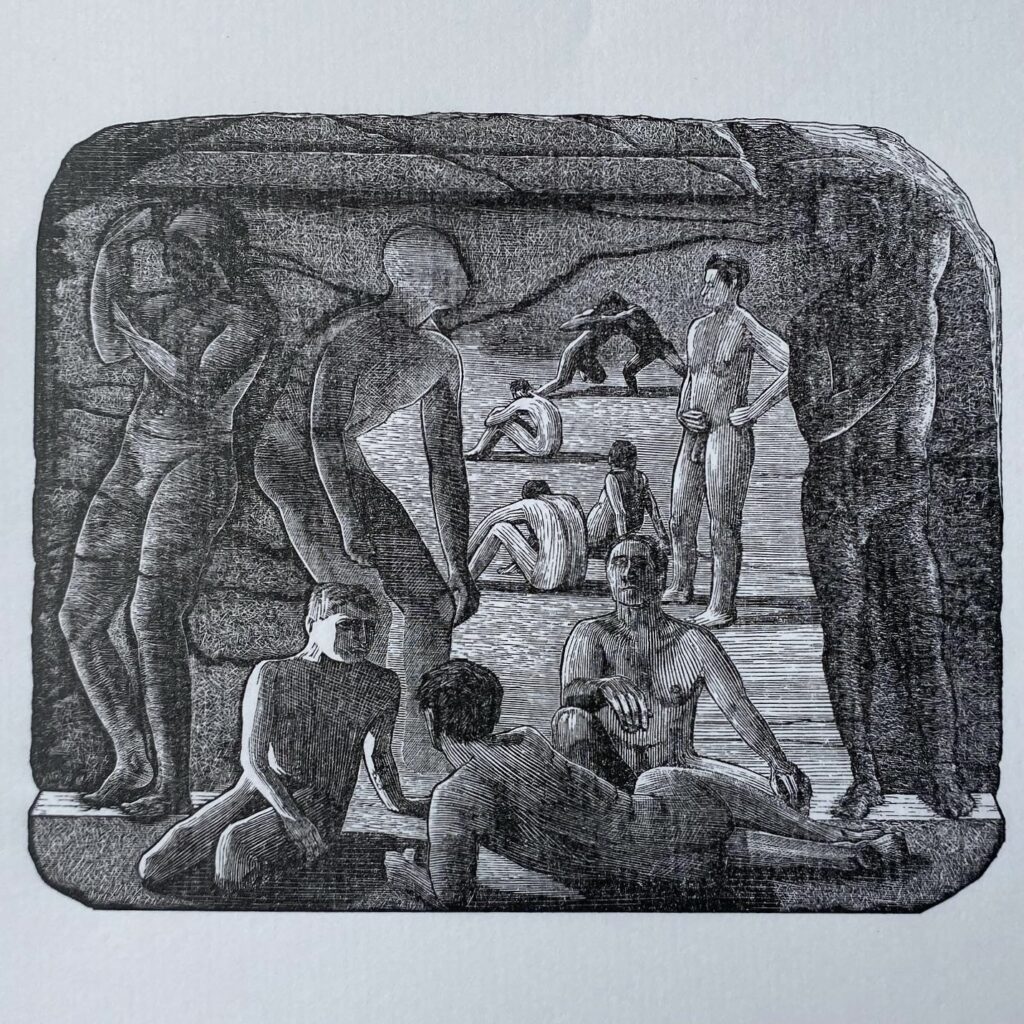
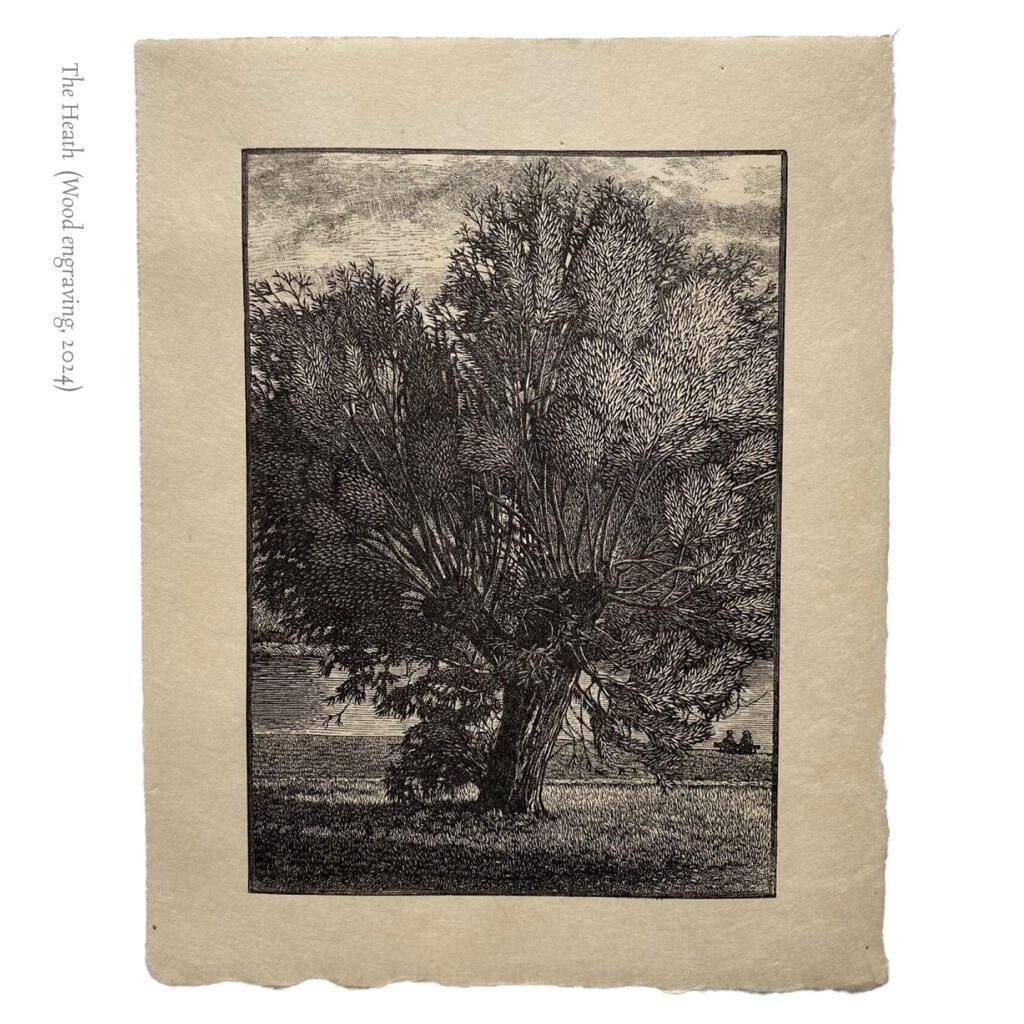
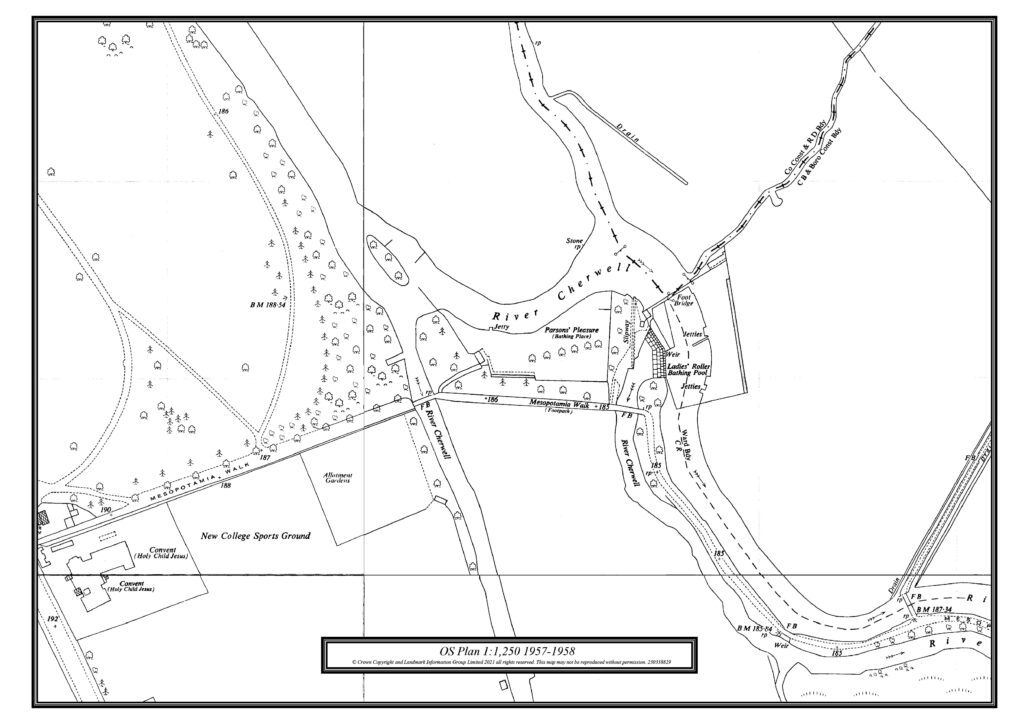
Ordinance Survey map showing Parson’s Pleasure and Dames Delight in 1958. The walkway (marked footbridge on the map) spanned the river from near the rollers over to the furthest part of the bank – and Dame’s Delight
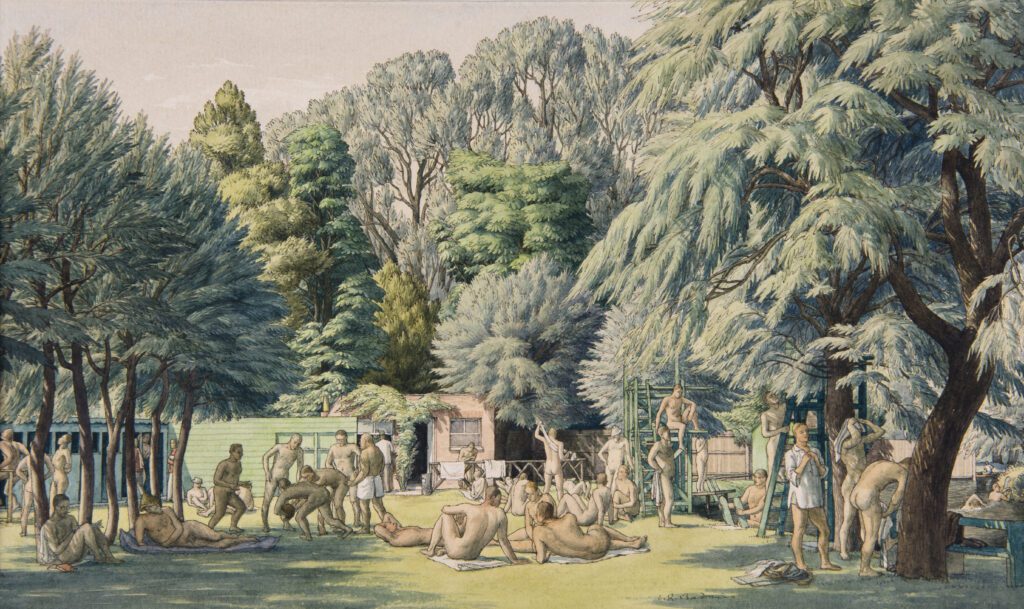
‘Parson’s Pleasure’ by Stanley Roy Badmin 1938
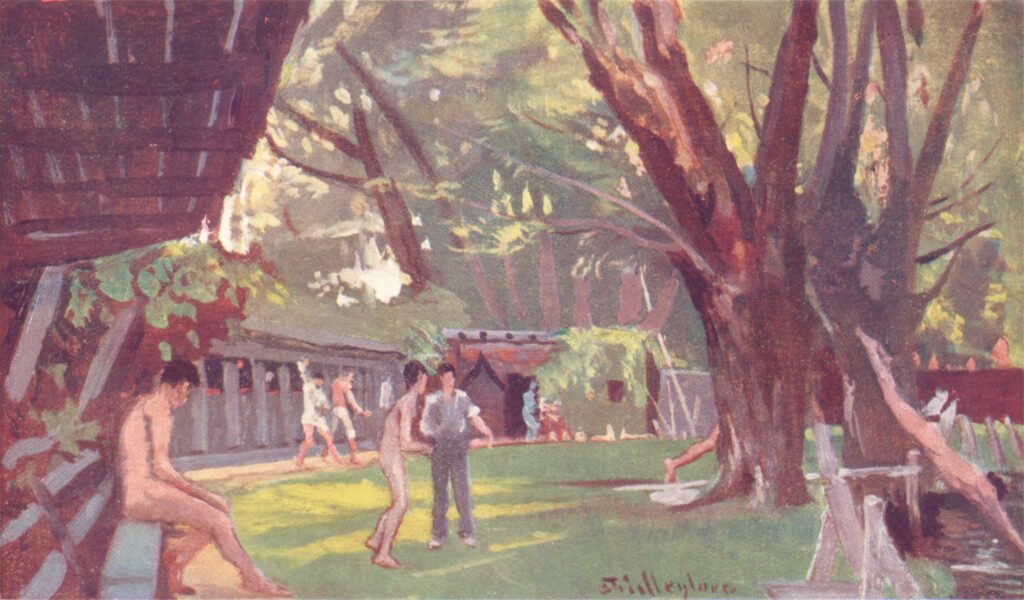
‘The Bathing Sheds’ or ‘Parson’s Pleasure’ John Fulleylove 1903
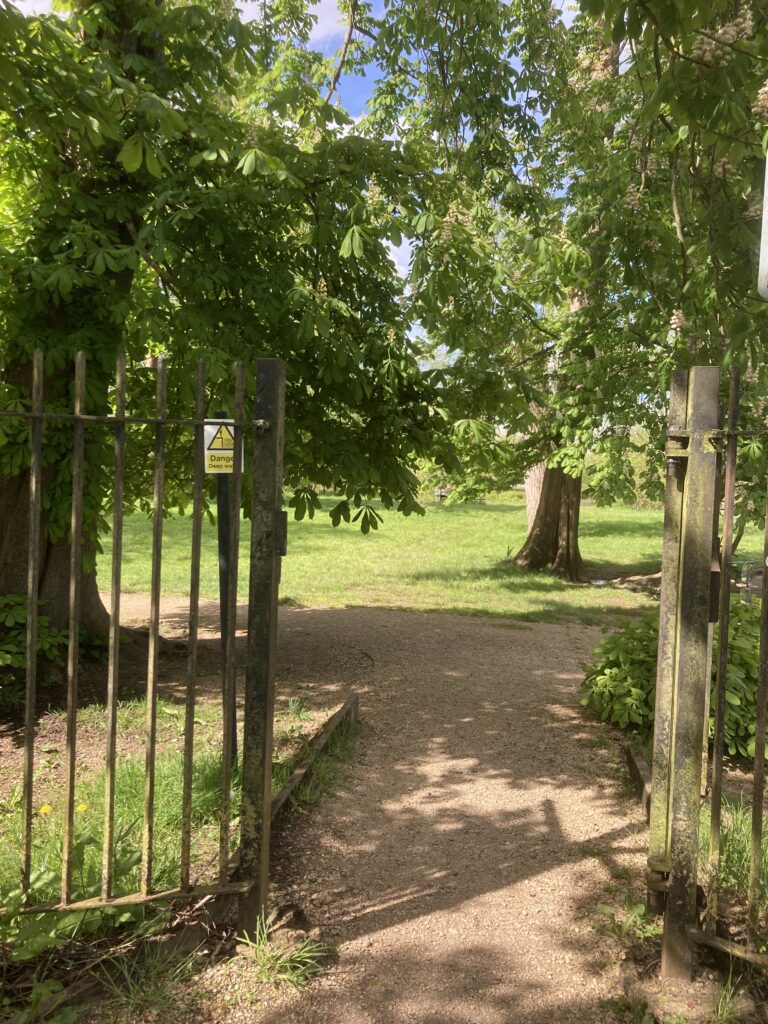
The gate to what was once Parson’s Pleasure, now a park by the River Cherwell.
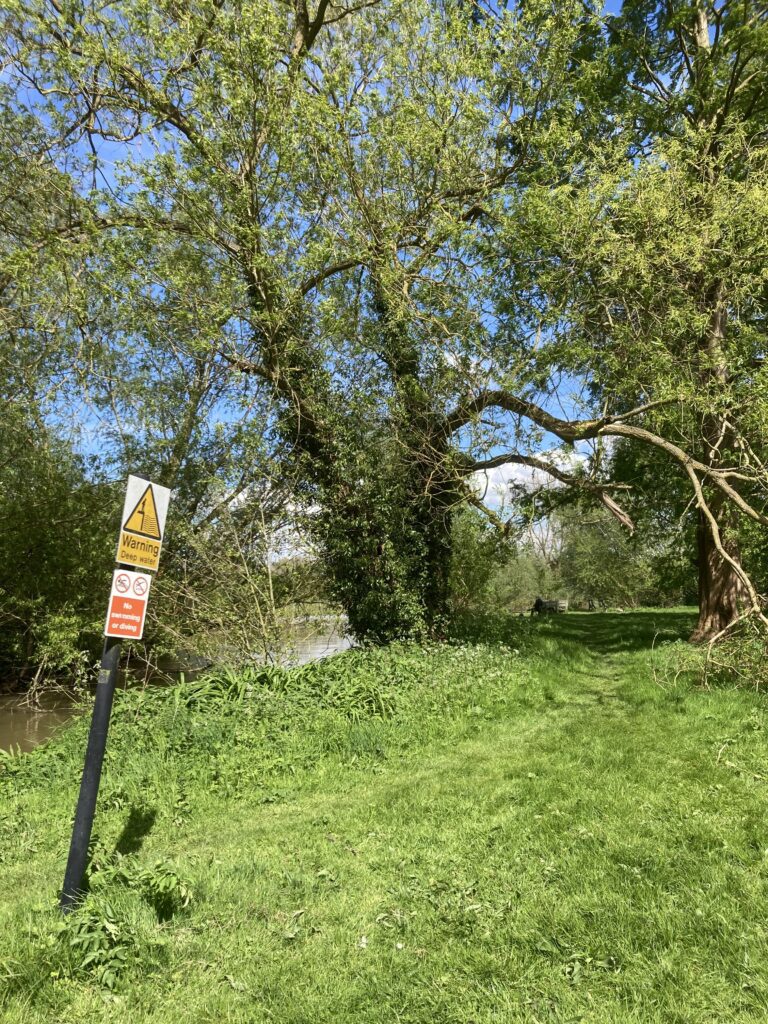
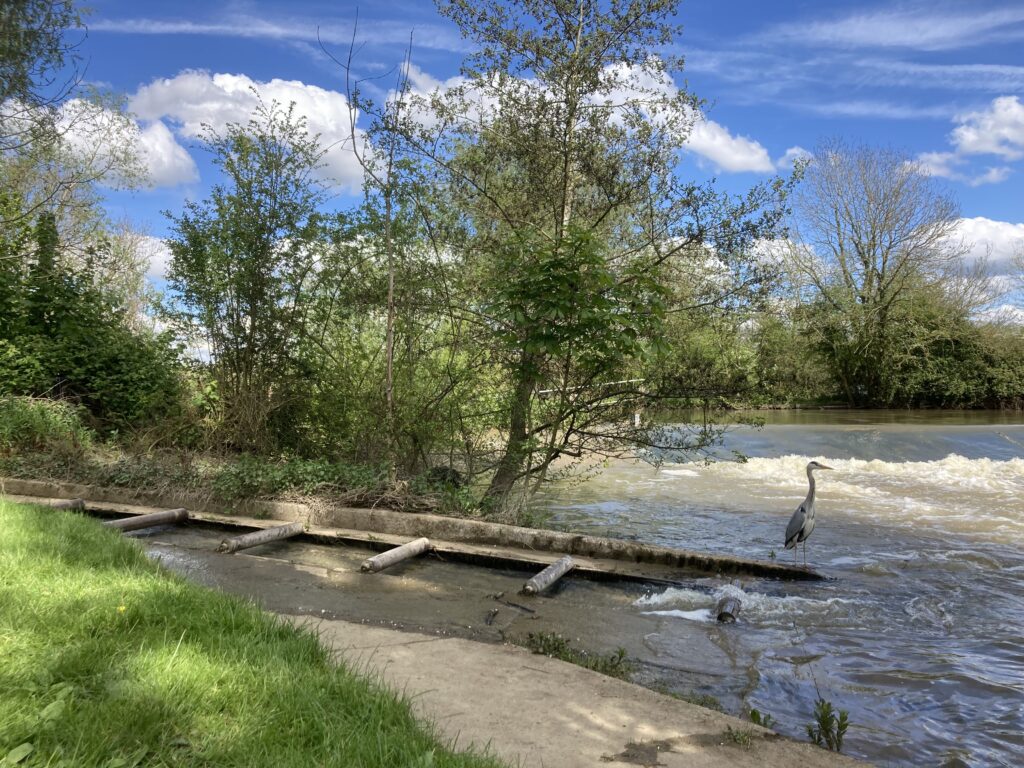
A heron by the rollers
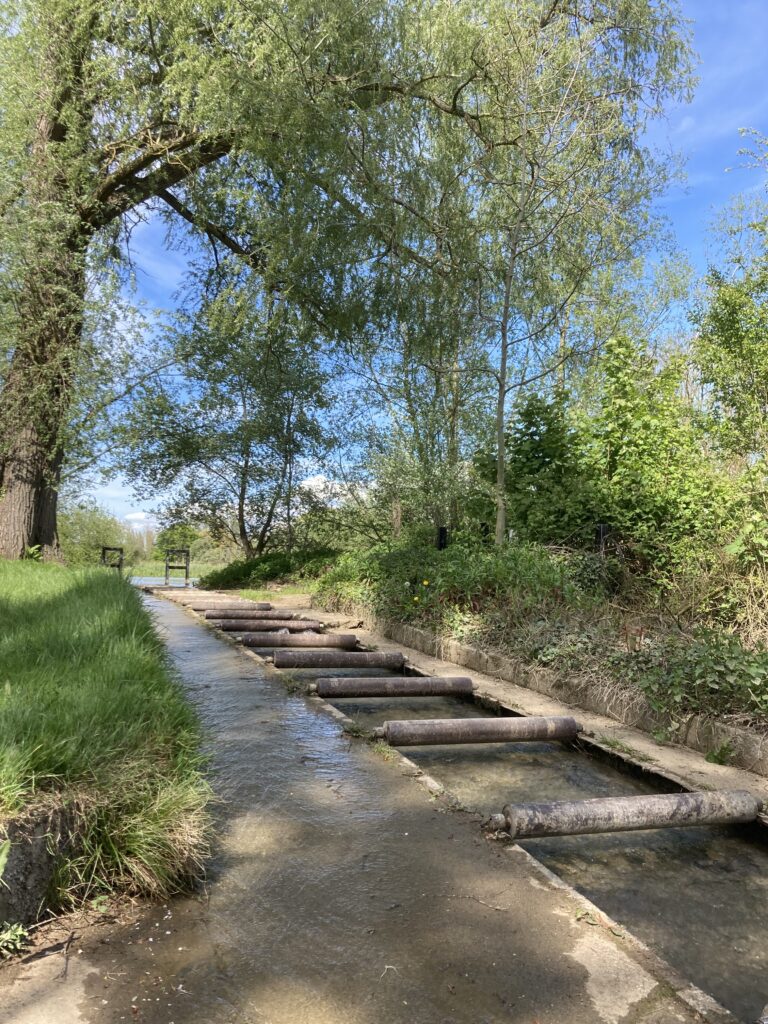
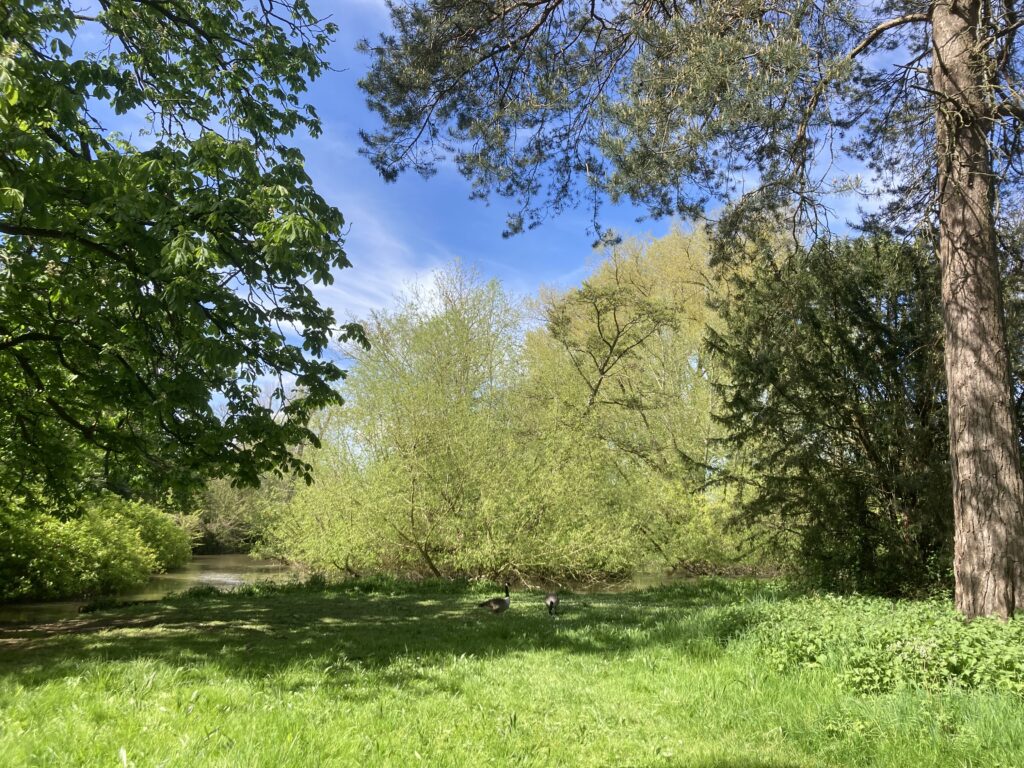
Wooden fencing and changing cubicles would have surrounded the area.
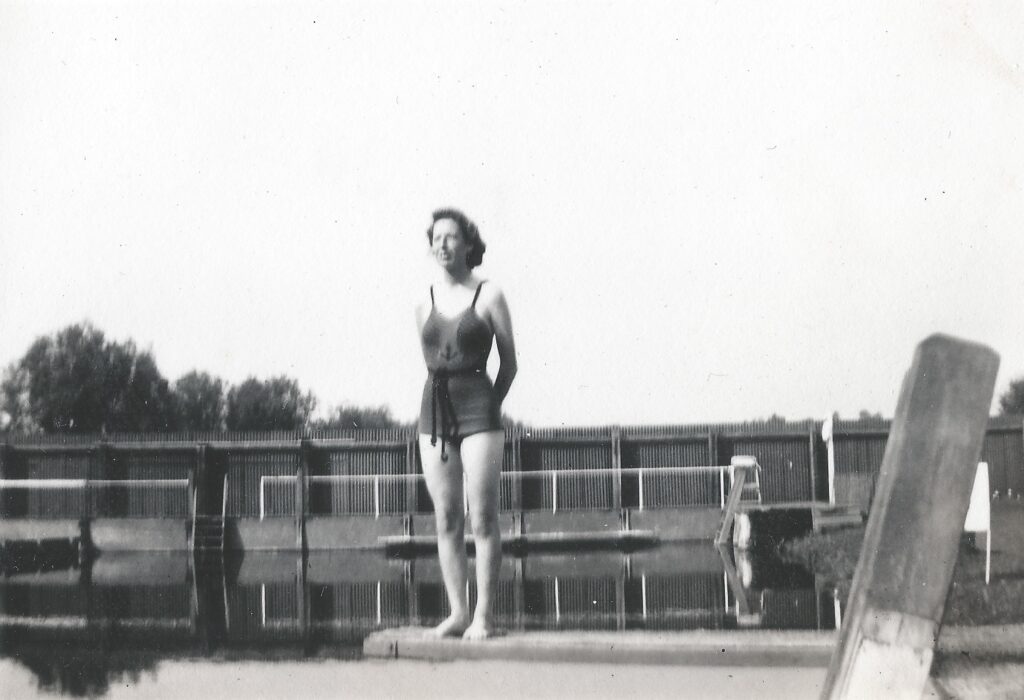
Dame’s Delight – a family swimming spot, rather than an exclusively gendered enclave like Parson’s Pleasure. These river beaches were free but you could rent towels and bathing costumes. This picture was probably taken in the 1940’s – you can see the walkway in the background by which bathers accessed the grassy river bank and cubicles.
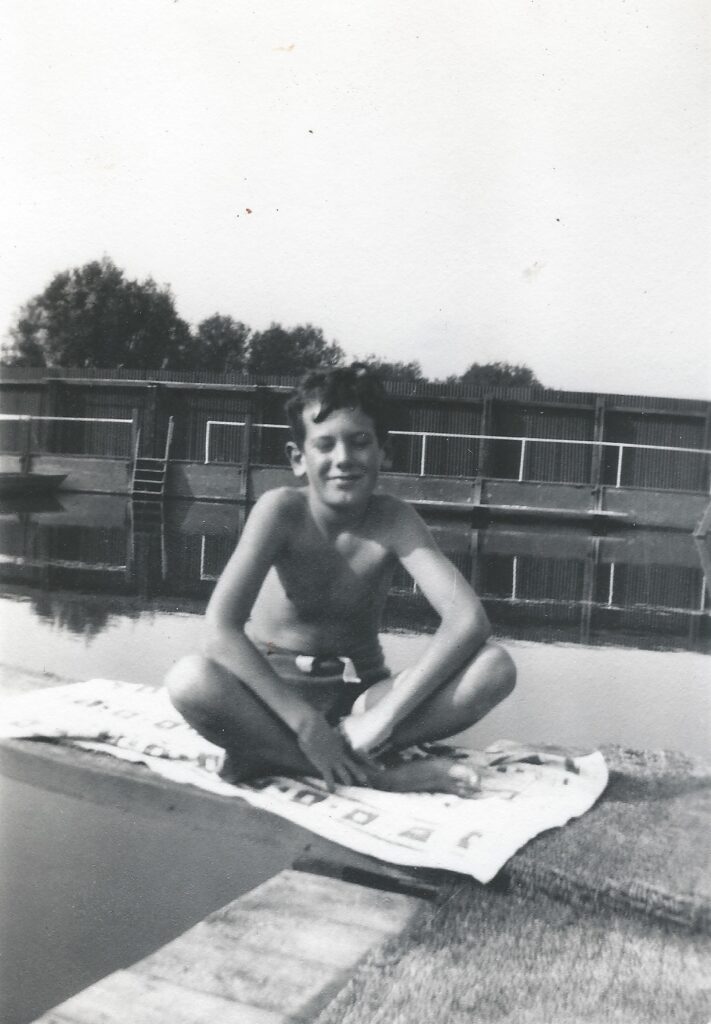

George’s grandmother, Penny Nairne (née Bridges), at Dame’s Delight in the 1930s, with her neighbour Peter Spokes. Note the use of a ‘Victoria’ mangle to wring out their woollen bathing costumes.

Dame’s Delight after it had been badly damaged by a storm in 1969, just before it was decommissioned and demolished.

What is left of the changing cubicles at Dame’s Delight.
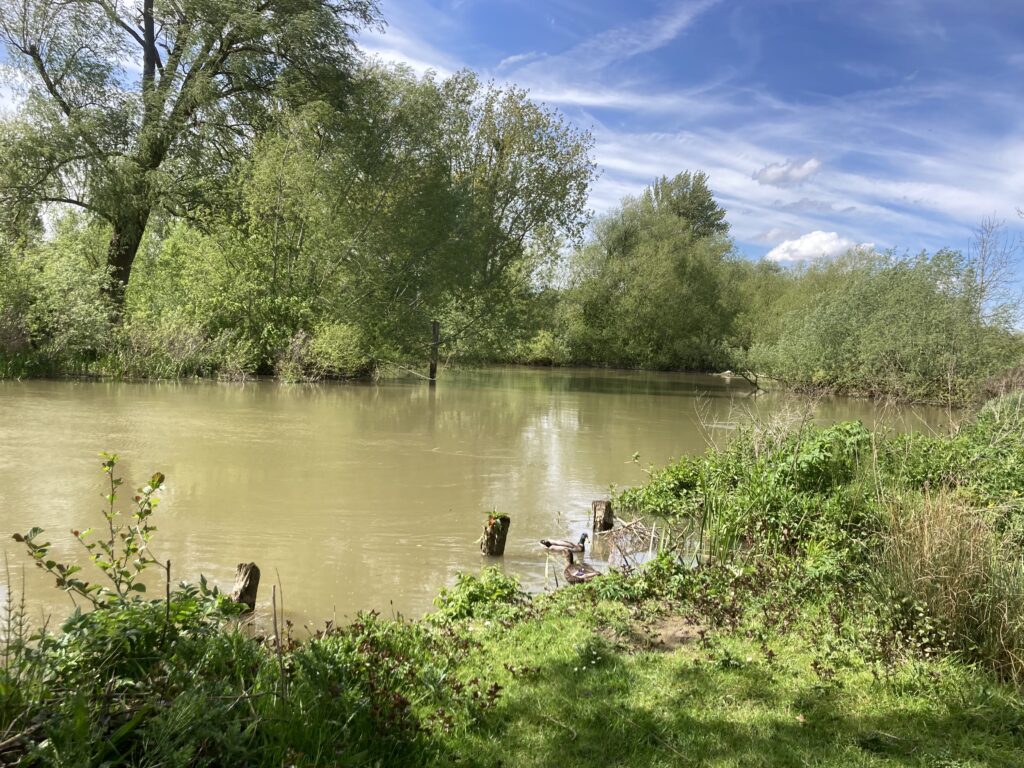
Looking out towards Parson’s Pleasure from Dame’s Delight. The wooden post midstream is all that is left of the walkway between the two. It also served as a screen to shield the naked swimmers at Parson’s Pleasure.
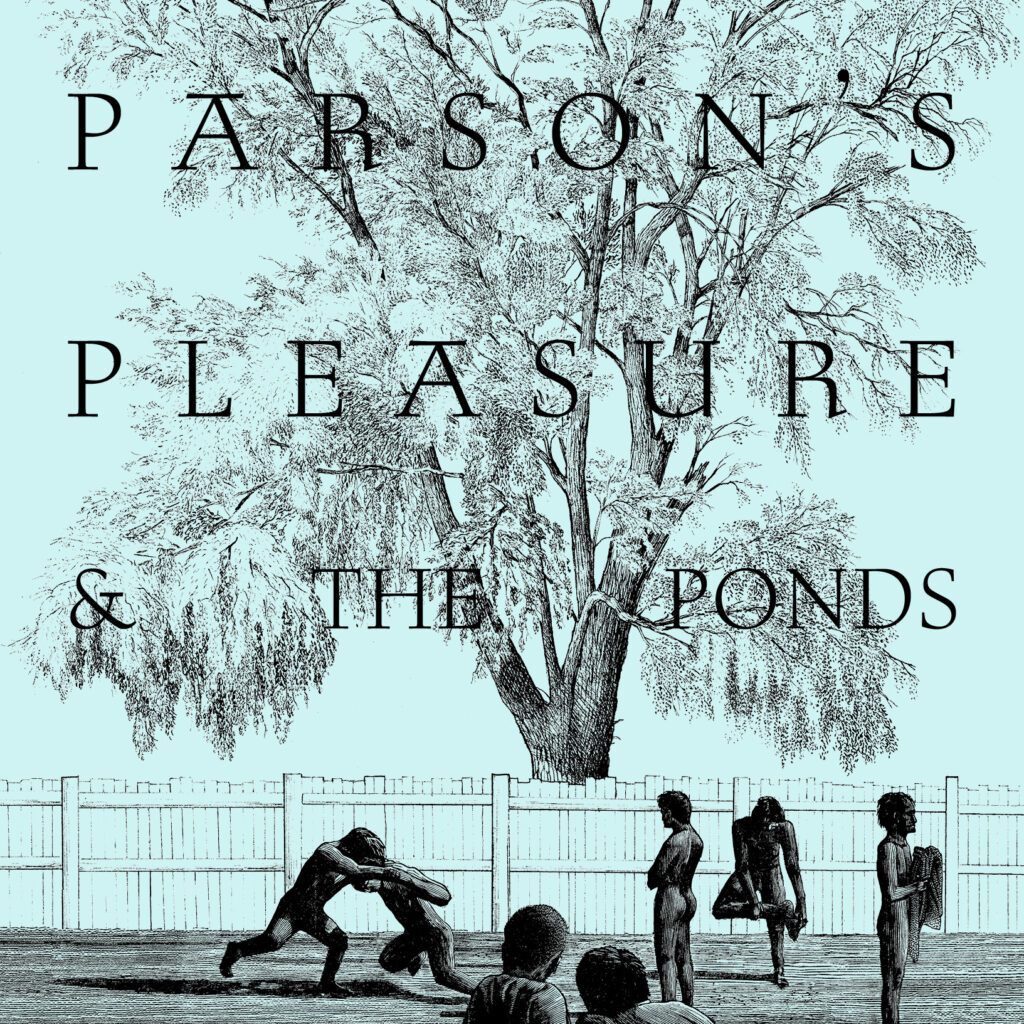
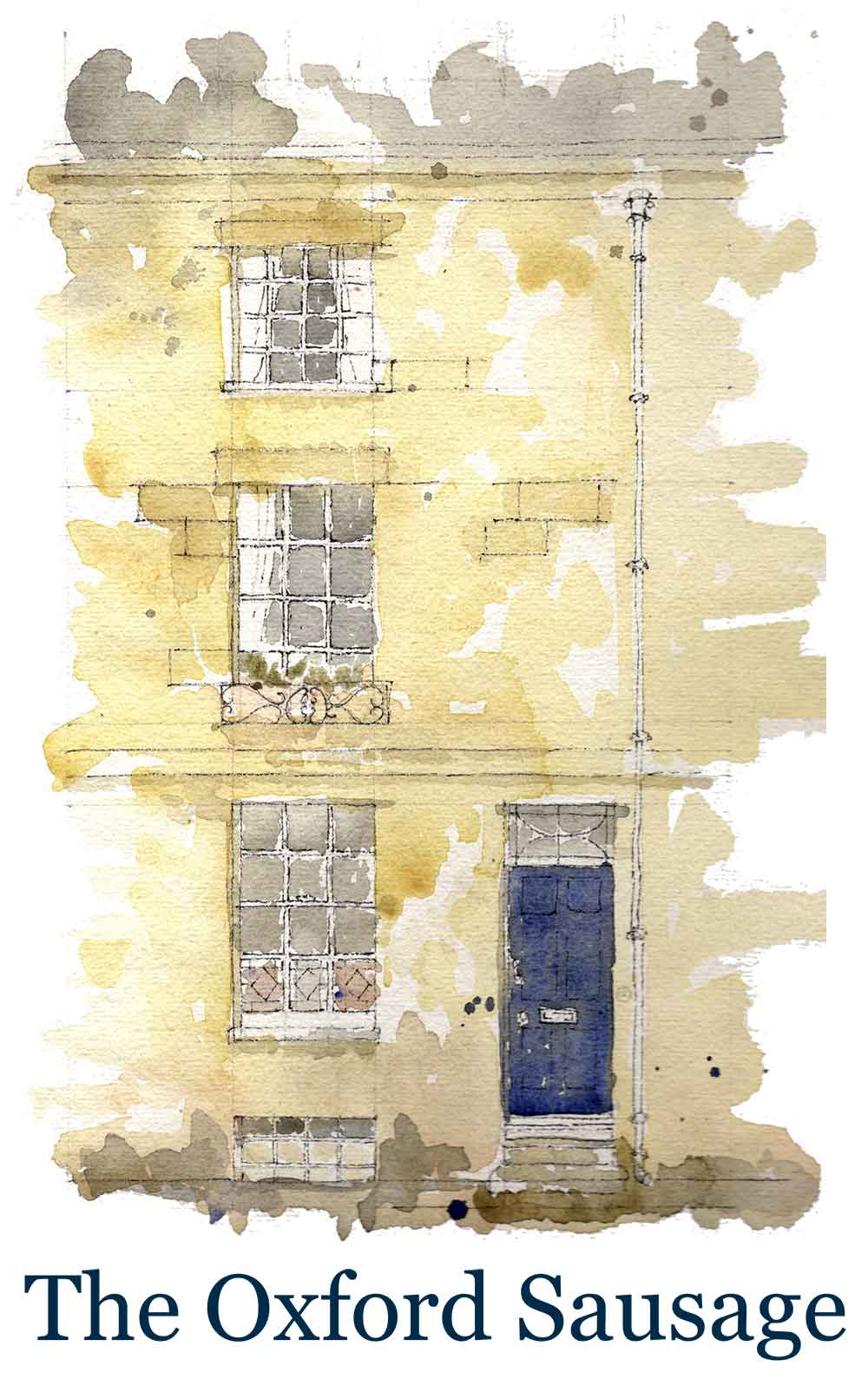

4 Comments
Join the discussion and tell us your opinion.
Have so much pleasure in reading these articles on Oxford life, history, buildings and locality. So well written with great photographs. I lived there for a time thirty years ago. Many from various corners of the world had a time there too. Should the ‘Sausage’ ever consider joining Substack, these articles would touch a chord with those who have general interests and associations with the town.
Another fantastic sausage- really want to walk down to parsons pleasure when we are next in oxford – I remember punting by it and seeing a row of elderly but very game old boys parading their wares
Great local history.
I just found an old ticket stub for this place, in an old book. Glad to know what it is now . TY